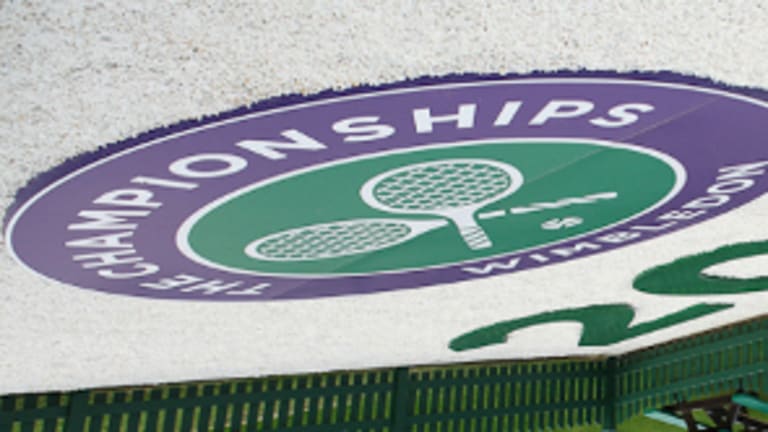Never send a smaller Czech lefthander to do a job best left to a taller Czech lefthander—at least not in the semifinal stage of Wimbledon. Lucie Safarova, a Grand Slam semifinalist for the first time in her career this week, demonstrated that today when she met fellow countrywoman Petra Kvitova on Centre Court.
Kvitova advanced to the second Wimbledon final of her career, winning in an hour and 20 minutes, 7-6 (6), 6-1. But despite the brevity of the encounter, it was a high-quality match for most of its duration, with both women showing how mercurial—and appealing—the classic lefty game can be on grass.
Given the match-up, this meeting could have been a mess. The oldest semifinalist (27) and WTA No. 23, Safarova was a heavy underdog. And while she led the entire draw in first-serve points won and took Kvitova to a third-set tiebreaker last month on grass in Eastbourne, this was her first look at Centre Court without a remote in her hand. How could she not be nervous?
But despite having been champion here in 2011, Kvitova has her own issues. Later that year, she came within a few swipes of the racquet of finishing the year atop the WTA rankings. She backed off then, and has backed off over and over since then, partly because she has yet to master her nerves. Kvitova is such a nervous nellie and so prone to internalizing her emotions in a self-injurious way that she employs a mental coach. (No, it isn’t John McEnroe.)
The women picked up today right where they left off in Eastbourne. They blasted monster lefty serves that slithered away like serpents on the slick grass. They drilled their groundstrokes with a dentist’s precision, hitting flat, hard, and for the lines. Safarova seemed a bit hesitant at the start, giving up a 30-0 lead to allow Kvitova to break. When Safarova allowed Kvitova to recover from a 0-30 deficit in the next game to hold for 2-0, it looked like the sixth seed might plow right through her.
But Safarova wasn’t about to let that happen—much to her credit. She stabilized in the next game, then broke for 2-2 with a gorgeous down-the-line backhand. It was an emblematic stroke in this southpaw battle. Both women hit with such power and precision that neither had a good look at a break for the rest of the set. They were playing first-strike tennis both on serve and while returning. The only thing that made it different from an old-fashioned serve-and-volley dust-up is that the approach shot has effectively replaced the volley in that strategy. Call it “serve-and-approach” tennis.
In the ensuing tiebreaker, Safarova gave up a mini-break to fall behind, 1-3. But she leveled again when she hit a pretty backhand winner down the line to cut Kvitova’s lead to 4-3. Safarova then hit an ace (she finished with four aces, half the number Kvitova hit) for 4-all. The women then exchanged mini-breaks, and two holds for 6-all.
At that stage, Safarova cracked a terrific serve but was unable to handle the quality return, driving the ball into the net to give Kvitova set point. Kvitova made the most of that opportunity, winning the tiebreaker with a cross-court forehand winner timed perfectly off a Safarova serve return.
Kvitova held the first game of the second set and then broke again. She ran away with it after that, less because of any decline in Safarova’s game than the elevation of her own to even greater heights. Kvitova had nearly twice as many winners as unforced errors (24-13). Safarova matched her, percentage if not volume-wise, striking 18 winners to just seven unforced errors. That was a telling detail, for the the big difference in this match was the extra bit of power and explosiveness that Kvitova brings to the table with her significant advantage in height and strength.
